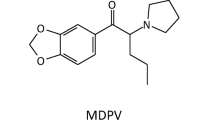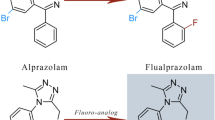Abstract
Introduction
2,4-Dinitrophenol (DNP) is a known uncoupler of oxidative phosphorylation that clinically leads to hyperthermia, tachycardia, tachypnea, and metabolic acidosis. Intentional overdoses of DNP are often fatal. We present an analytically confirmed fatal case of DNP overdose with a falsely positive elevated salicylate concentration. We further explored this cross reactivity of DNP with two salicylate assays.
Methods
Clinically relevant serial dilutions of DNP were prepared in drug-free serum and analyzed using two different colorimetric NADH/NAD-based analytical methodologies.
Results
The enzymatic salicylate assay demonstrated a reproducible false elevation of salicylate starting at a DNP level of 100 mg/L while the EMIT-based methodology was without any such interference at the maximum concentration tested (150 mg/L).
Conclusions
DNP cross reacts with some salicylate assays. This knowledge is important for providers, as there are significant variations in the management of DNP versus salicylate toxicity.


Similar content being viewed by others
References
Grundlingh J, Dargan PI, El-Zanfaly M, Wood DM. 2-4-Dinitrophenol (DNP): a weight loss agent with significant acute toxicity and risk of death. J. Med Toxicol. 2011;7:205–12.
Holborow A, Purnell RM, Wong JF. Beware the yellow slimming pill: fatal 2,4-dinitrophenol overdose. BMJ Case Rep. 2016:1–3.
McFee RB, Caraccio TP, McGuigan, Reynolds SA, Bellanger P. Dying to be thin: a Dinitrophenol related fatality. Vet Human Toxicology. Oct;46(5):251–4.
Kamour A, George N, Gwynnette D, Cooper G, Lupton D, Eddleston M, et al. Increasing frequency of severe clinical toxicity after use of 2,4-Dinitrophenol in the UK: a report from the National Poisons Information Service. Emerg Med J. 2015;32:383–6.
Hsiao AL, Santucci KA, Seo-Mayer P, Mariappan MR, Hodsdon ME, Banasiak KJ, et al. Pediatric fatality following ingestion of Dinitrophenol: postmortem identification of a “Dietary Supplement”. Clin Toxicol. 2005;43:281–5.
Leftwich RB, Floro JF, Neal RA, Wood AJJM. Dinitrophenol poisoning: a diagnosis to consider in undiagnosed fever. South Med J. 1982;75(2):182–4.
Roberts, JR, Reigart, JR. “Pentachlorophenol and Dinitrophenolic pesticides.” Recognition and Management of Pesticide Poisonings. 6th Ed. United States Environmental Protection Agency: Office of Pesticide Programs. 2013. Chapter 11:103–109.
Macnab AJ, Fielden SJ. Successful treatment of dinitrophenol poisoning in a child. Pediatr Emerg Care. 1998;14(2):136–8.
O’Malley GF. Emergency department management of the salicylate-poisoned patient. Emerg Med Clin N Am. 2007;25:333–46.
Watabe M, Nakaki T. ATP depletion does not account for apoptosis induced by inhibition of mitochondrial electron transport chain in human dopaminergic cells. Neuropharmacology. 2007;52(2):536–41.
Miranda EJ, McIntyre IM, Parker DR, Gary RK, Logan BK. Two deaths attributed to the use of 2,4-Dinitrophenol. J Anal Toxicol. 2006;30(3):219–22.
Tewari A, Ali A, O’Donnel AS, Butt M. Weight loss and 2,4-Dinitrophenol poisoning. Br J Anaesth. 2009;102(4):566–7.
2,4-Dinitrophenol. National Center for Biotechnology Information PubChem Compound Database; CID=1493, https://pubchem.ncbi.nlm.nih.gov/compound/1493 (accessed Apr. 11, 2018).
Agency for Toxic Substances and Disease Registry (ATSDR). 1995. Toxicological profile for Dinitrophenols. Atlanta, GA: U.S. Department of Health and Human Services, Public Health Service. https://www.atsdr.cdc.gov/toxprofiles/TP.asp?id=729&tid=132, https://www.atsdr.cdc.gov/toxprofiles/tp64-c2.pdf
Funding
None.
Author information
Authors and Affiliations
Corresponding author
Ethics declarations
Consent was not available, but this case was anonymized according to JMT guidelines and publication was approved after review by members of the editorial board because the manuscript primarily focuses on the laboratory issues identified by this clinical event.
Conflicts of Interest
None.
Rights and permissions
About this article
Cite this article
Kopec, K.T., Freiermuth, C., Maynard, S. et al. Dinitrophenol (DNP) Fatality Associated with a Falsely Elevated Salicylate Level: a Case Report with Verification of Laboratory Cross Reactivity. J. Med. Toxicol. 14, 323–326 (2018). https://doi.org/10.1007/s13181-018-0677-1
Received:
Revised:
Accepted:
Published:
Issue Date:
DOI: https://doi.org/10.1007/s13181-018-0677-1




